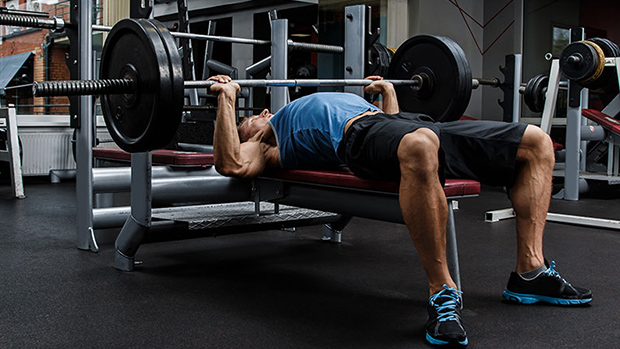Rest Periods and Gains
When you're pressed for time, you'll be tempted to cut your rest intervals short. Resist the urge! While it may seem like a time-saver, it's actually a results-killer.
Consider that research shows that 3 minutes between sets is optimal for gaining strength and size (1), so when you short-change your rest times, you reduce the amount of weight you can lift and/or reps for your subsequent sets. As a result, you lower your volume load and decrease your gains.
Instead of using insufficient rest intervals, try the late Charles Poliquin's method of alternating between non-competing exercises. This system has been around for a long time, yet few people use it. That's too bad, because when done correctly, you can cut your training time in half.
Instead of doing a set of bench press and then playing around on your phone for 3 or 4 or more minutes, place a heavy dumbbell next to the bench press. Then do this:
- A1. Bench Press: Rest 45 seconds
- A2. 1-Arm Dumbbell Row: Rest 45 seconds
Repeat for your desired number of rounds
If you prefer whole body training, you can also pair lower body hinge movements with upper body movements:
Hinge and Push Example
- A1. Trap Bar Deadlift: Rest 60 seconds
- A2. Dips: Rest 45 seconds
Squat and Pull Example
- B1. Front Squat: Rest 60 seconds
- B2. Chin-Up: Rest 45 seconds
This style of training only gives you time to record your set in your training journal, grab a quick swig of water, and get ready for your next set. This keeps you off your phone, which will improve your mental focus and create a better flow to your training session.
- Schoenfeld BJ et al. Longer inter-set rest periods enhance muscle strength and hypertrophy in resistance-trained men. J Strength Cond Res. 2016 Jul;30(7):1805-12.





